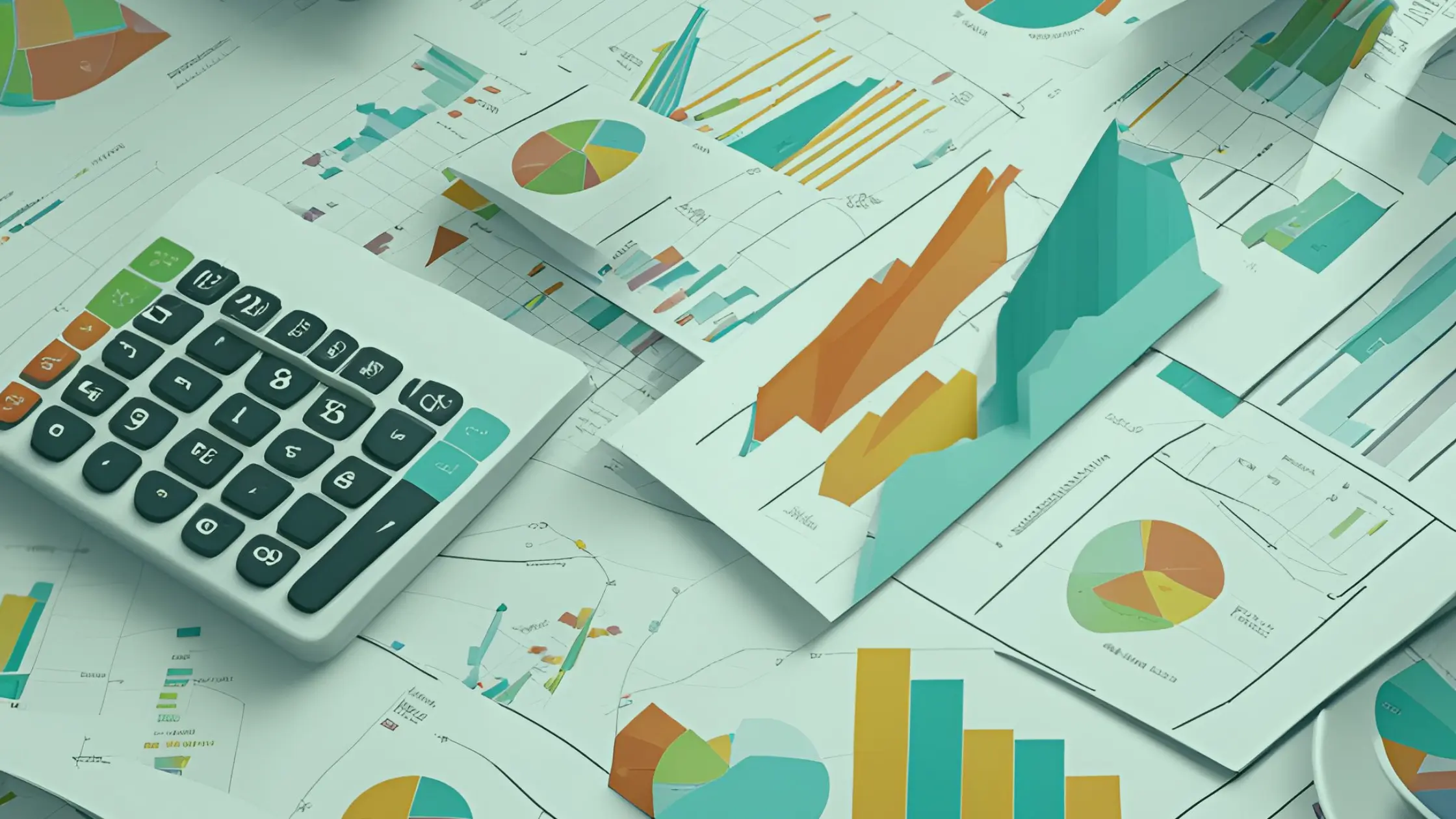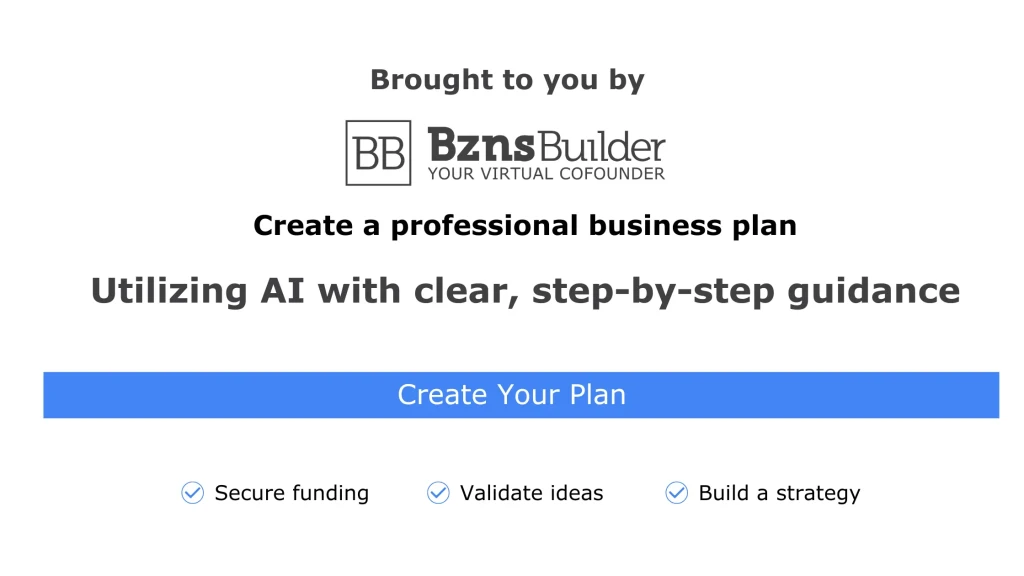Guide to Writing a Financial Plan for Your Small Business — 2022

Guide To Writing A Financial Plan For Your Small Business — 2022
The most difficult aspect of drafting a company plan is putting together a financial model. It is, nonetheless, one of the most important. Businesses with a comprehensive financial plan are better positioned to pitch to investors, acquire financing, and achieve long-term success.
Thankfully, you don’t need a degree in accounting to put one together. All you need to know is what goes into the major parts and the automated financial feature at BznsBuilder for SMB will help you.
Continue reading to learn about the six elements that must be included in your financial plan in order to effectively establish your firm.
What is the definition of a financial plan?
A financial plan is essentially a summary of your company’s present financials and growth expectations. Consider any records that show your current financial condition as a snapshot of your company’s health, with predictions representing your future aspirations.
What are the benefits of having a financial plan for your company?
As previously stated, the financial plan provides a picture of your company’s present status. Your immediate and long-term financial objectives will be informed by the forecasts, which will serve as a starting point for designing a plan.
It helps you in setting reasonable expectations for your company’s performance as a business owner. Because you know your finances well and out, you’re less likely to be shocked by your present financial situation and better equipped to handle a crisis or explosive growth.
A solid financial strategy also makes you more appealing to investors, in addition to helping you better run your firm. It reduces your risk and demonstrates that you have a solid strategy and track record for expanding your company.
An effective financial plan must include the following components.
Whether you’re just beginning a firm or expanding an established one, all business plans should contain the following elements:
- Statement of Profit and Loss
- Statement of Cash Flow
- a financial statement or Balance sheet
- Forecasted sales
- Personnel planning
- Break-even analysis and business ratios
These financial statements might still help you even if you’re just getting started.
How to Make a Small Business Financial Plan
The good news is that they don’t have to be complicated to make or comprehend. You’ll be well on your way to constructing a thorough financial plan with only a few informed predictions about how much you may sell and what your costs will be.
1. Income and expense statement
Profit and loss statement, income statement, pro forma income statement, P&L (short for “profit and loss”)—this financial statement is simply an explanation of how your firm generated a profit (or incur a loss) during a certain period of time.
It’s a table that details all of your income sources and all of your costs during a three-month period, with the overall net profit or loss shown at the bottom.
Profit and loss statements come in a variety of forms, based on the kind of business and the structure of the company (nonprofit, LLC, C-Corp, etc.).
What should your profit and loss contain?
- Your earnings (also called sales)
- Your “cost of sale” or “cost of goods sold” (COGS)—be aware that certain businesses, such as service businesses, may not have COGS.
- Your gross margin is the difference between your revenue and your cost of goods sold.
These three factors (revenue, cost of goods sold, and gross margin) form the foundation of your company model, or how you generate money.
You’ll also include your operational expenditures, which are the costs of running your company but aren’t immediately related to earning a sale. Rent, utilities, and insurance are examples of constant costs that don’t change based on the strength or weakness of your earnings in a particular month.
Where can I get operating income?
Using the P&L statement, subtract the gross margin from your operating expenditures to determine your operating income:
Operating Income = Gross Margin – Operating Expenses
Your operational income will often be equal to your “profits before interest, taxes, depreciation, and amortization,” depending on how you categorize certain of your costs (EBITDA). This is essentially how much money you produced in profit before accounting and tax requirements were taken into account. It’s also known as “profit before interest and taxes,” “gross profit,” and “contribution to overhead”—all of these terms relate to the same figure.
How to find the net income
Your EBITDA minus the “ITDA” is your so-called “bottom line”—officially, your net income, which is seen at the very end (or bottom line) of your profit and loss statement. Simply remove your interest, taxes, depreciation, and amortization expenditures from your EBITDA to arrive at your net income:
Net Income = Operating Income − Interest, Taxes, Depreciation, and Amortization Expenses.
2. A statement of cash flow
Just as important as your profit and loss statement is your cash flow statement. There is no way around the fact that businesses need cash. A cash flow statement shows how much money your business made, how much money is spent, and how much money it had left at the end of the month.
You won’t be able to run a healthy business if you don’t know how much cash you have, where it comes from, where it goes, and when. And you won’t be able to get money from lenders or investors if you don’t have a cash flow statement. This is because the statement shows all of this information in a clear way.
The cash flow statement shows you the difference between what your profit and loss statement says is your income (your profit) and how much cash you actually have.
Even if your business is making a lot of money, you might not have enough cash to pay your bills and keep it going. Even if your business isn’t making money, you might have enough cash on hand to keep it open for a few months and give yourself time to turn things around. That’s why it’s so important to understand this financial statement.
Cash versus accrual accounting
The cash method and the accrual method are the two types of accounting techniques.
The accrual approach requires you to account for both sales and costs at the same time—for example, if you had a large preorder for a new product, you wouldn’t account for all of the preorder sales income until the product was actually manufactured and delivered. The matching concept is the foundation of accrual accounting because it entails matching income with comparable costs.
The cash technique requires you to account for your sales and costs as they occur, rather than worrying about matching up expenses with specific sales or vice versa.
If you adopt the cash method, your cash flow statement will not change much from your profit and loss statement. That may seem to make things easier, but I strongly advise against it.
I believe that the accrual system of accounting provides the most accurate picture of how your firm functions, and that if you aren’t currently using it, you should consider switching to it.
Why cash flow should be handled with accrual accounting
If you aren’t already using accrual accounting, you should think about it if you want to get the best idea of how your business works.
This is why: Let’s say you run a business that runs summer camps. You might get paid by a camper in March, which is a few months before the camp starts in July. If you use the accrual method, you wouldn’t recognize the revenue until you’ve provided the service, so both the income and the costs for the camp would be recorded in July.
With the cash method, you would have counted the income back in March, but all of the expenses in July. This would have made it look like you were profitable in the months leading up to the camp, but not in the month when the camp happened.
When it’s time to figure out how profitable an event or product was, cash accounting can be hard to handle, and it can be hard to really understand how your business works. Accrual accounting is the best way to see how your business works.
3. The balance sheet
Your balance sheet provides a snapshot of your company’s financial situation—how are you performing at the moment? How much money do you have in the bank, what do your customers owe you, and what do your suppliers owe you?
What should your balance sheet consist of?
- Assets: Accounts receivable, cash on hand, inventories, and so forth.
- Liabilities: Accounts payable, credit card balances, loan repayments, and other financial obligations.
- Equity: This is usually only the owner’s equity in a small firm, but it might also comprise investor shares, retained profits, stock proceeds, and so on.
Because it’s an equation that has to balance out, it’s called a balance sheet:
Liabilities + Equity = Assets
The sum of your obligations and equity is always equal to the sum of your assets.
Your entire profit or loss adds to or subtracts from your retained profits at the conclusion of the accounting year (a component of your equity). As a result, your retained profits represent your company’s total profit and loss from its foundation.
If you’re a single proprietor or other pass-through tax business, however, “maintained earnings” doesn’t actually apply to you since all profits and losses are passed through to the owners rather than rolled over or retained as they are in a corporation.
4. Sales projections
The sales forecast is exactly what it sounds like: your predictions, or forecasts, of how much you expect to sell in a specific time. Your sales forecast is a critical component of your company strategy, particularly when lenders or investors are involved, and it should be updated on a regular basis.
Your sales forecast should be updated on a regular basis as part of your company strategy.
You should make a projection that corresponds to the sales figure in your profit and loss statement. In fact, the sales estimate auto-fills the profit and loss statement in our business planning software, BznsBuilder.
There is no such thing as a one-size-fits-all sales estimate since each company has unique requirements. What sort of company you have and how extensively you want to monitor your sales will determine how you categorize and arrange your forecast.
In general, you’ll want to separate your sales estimate into useful divisions for planning and marketing reasons.
For example, if you run a restaurant, you should split your projections for supper and lunch sales. A gym owner, on the other hand, could find it useful to distinguish between the membership kinds. You could even divide down your prediction by product, with a different line for each product you offer, if you want to be extremely exact.
You should include the “cost of goods sold” for each section of expected sales with each segment of forecasted sales (COGS). Your anticipated gross margin is the gap between your expected revenue and your forecasted COGS.
5. Personnel plan
Consider the personnel plan to be a justification for each team member’s importance to the company.
The total significance of your people strategy is primarily determined by the sort of organization you operate. If you are a lone owner with no staff, this may not be as crucial as it seems and might be described in two sentences. If you’re a bigger company with significant labor expenditures, though, you should take the time to find out how your employees affect your bottom line.
If you decide to establish a comprehensive personnel strategy, it should contain a description of each member of your management team, as well as what they bring to the table in terms of training, skill, and product or market knowledge. Consider this an explanation for each team member’s importance to the company, as well as their remuneration (and/or a stock portion, if appropriate). This would go in your business plan’s company overview section.
If it’s more appropriate for your firm and the goals you have for your business plan, you may use this section to include whole divisions. There’s no rule that says you have to mention each member of the management team individually.
This is also the place to put team members or departments that you’ve budgeted for but haven’t yet employed. Describe who your ideal candidate(s) is/are, as well as the wage range you’ve allocated for them (s).
6. Break-even analysis and financial ratios
Ratios in business explained
You have all the data you need to compute the conventional business ratios if you have your profit and loss statement, cash flow statement, and balance sheet. Although these ratios aren’t required in a company plan—especially for an internal plan—knowing them is usually a good idea.
Most commonly used profitability ratios include:
- Gross margin
- Return on sales
- Return on assets
- Return on investment
Liquidity ratios include the following::
- Debt-to-equity
- Current ratio
- Working capital
Gross margin, return on investment (ROI), and debt-to-equity is perhaps the most prevalent measures employed by company owners and required by lenders.
Explanation of the break-even point
Your break-even analysis is a computation of how much you’ll need to sell to “break even,” that is, pay all of your costs.
You’ll need to figure out the contribution margin of what you’re selling to figure out your break-even point. The contribution margin in the instance of a restaurant will be the price of the meal less any related expenditures. The consumer, for example, pays $50 for the lunch. The cost of the food is $10, and the compensation for preparing and serving the dinner is $15. ($50 – $10 – $15 = $25) is your donation margin.
You may use this formula to figure out how much sales income you’ll need to break even. If your monthly fixed expenditures are $5,000 and you have a 50% contribution margin on average (as in our restaurant example), you’ll need $10,000 in sales to break even.
Make financial planning a regular component of your business’s practice.
When you first start out, your financial strategy may seem complex, but it is critical to grasp this component of your company plan.
Even if you hire an accounting company to handle your bookkeeping and regular financial analysis, you, the business owner, should be able to read and comprehend these records and make choices based on what you discover. Using a business dashboard tool like BznsBuilder may make this process much easier since you won’t have to go through spreadsheets to enter and change every single element.
Your prospects of receiving capital from investors or lenders are significantly better if you prepare and present financial statements that all work together to tell the narrative of your firm, and if you can answer questions about where your numbers come from.








